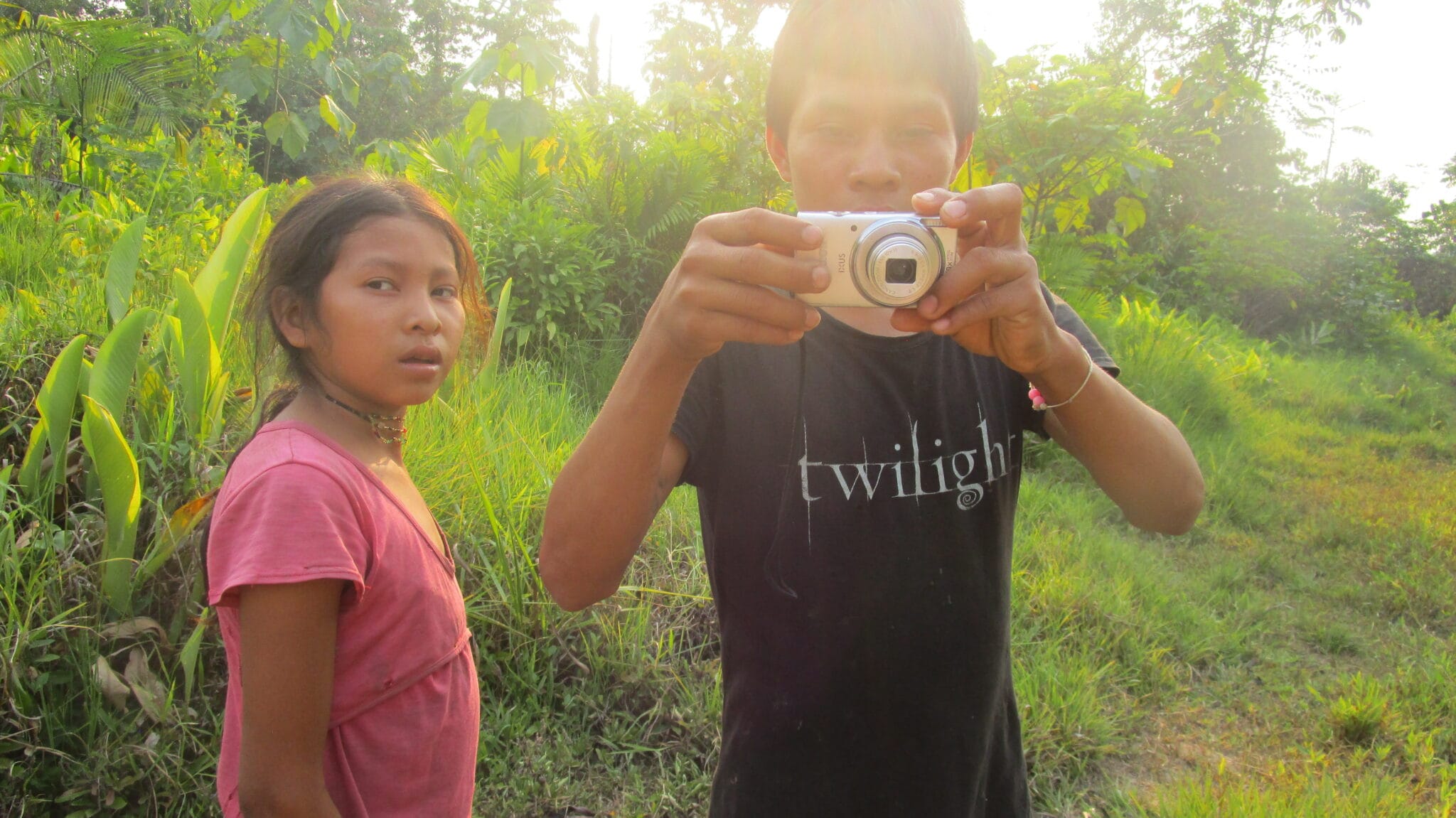
The Chimán people’s film debut
Chatdÿe Tsimane is a documentary that tells the story of the Chimán people of Maraca’tunsi, one of the few indigenous communities in the Bolivian Amazon that still lives entirely from nature: they depend on the forest to subsist and, at the same time, the forest depends on them to keep their ecosystems alive. Shot and edited collaboratively by photographer Manuel Seoane and members of this community, this is the first film in which the Chimanes see themselves represented and in which they decide for themselves what they want to show.
By Alonso Almenara
The word “Pariente” (relative) holds a particular mystery in the title of the documentary Chatdÿe Tsimane (Chiman Relative), made collaboratively by photographer Manuel Seoane and the Chiman community of Maraca’tunsi, originally from the department of Beni, in the Bolivian Amazon. It seems to allude to a closeness or affinity: perhaps that of the documentary filmmaker, with the people portrayed in the film. But “Parientito” (little relative) is also the formula used by other indigenous communities, such as the Moveños and the Mojimas, to refer to the Chimanes, whom they consider their inferiors. Unlike the latter, the Chimán people have kept their traditional way of life intact: hunting, fishing, planting, and gathering for subsistence. With a population of about 17,000, they are the central defenders of the forest in a region of the Amazon coveted by the timber industry. Calling themselves “relatives” is perhaps a form of vindication. In other words: we are no less. And even if they don’t want it, we are connected.
Funded by National Geographic’s Explorers Program Fund, the 86-minute medium-length film premiered last June in movie theaters, museums, and cultural centers in Bolivia. “Now we are applying to festivals, but the ultimate goal is to upload the film to YouTube,” says Manuel. “Because if it’s not seen, it’s useless, right?”
The paceño photographer’s work on indigenous and environmental issues reached the final rounds of World Press Photo in 2019 and 2022. In addition to being part of National Geographic’s explorer staff, he has been a Reuters and Pulitzer Center fellow since 2018. At 39, he considers himself more of a journalist than a photographer: “Photography is my tool, but I rescue from journalism the mission to show realities faithfully. And I believe the best way to do that is to give as much of the floor as possible to the subjects one wants to document. That’s my working method: I don’t go with a preconceived idea of what I’m going to tell, but I approach the people, ask them what they want to say, and from that, there is a mutual reflection, and then the story is created.”
With Chatdÿe Tsimane, he jumped from photography to cinema – a decision that still causes him some vertigo – but following the same principle. “I have been working a lot in rural indigenous communities on documentary projects of various kinds: with illegal mining in the Madidi National Park, north of La Paz; with deforestation and the burning of forests in the Chiquitanía. And I have always seen that resistance to these phenomena only occurs when there is human and local presence,” he says. “There is something about rooting, about saying: I am from here, and this is the only thing I will leave to my children and grandchildren. Because in the end, if you’re not there, who cares?”
Manuel understands that for them, the Chimanes, the forest is their home, and they know this personally. “They don’t talk about climate change or extractivist, but they understand that if a lumber company arrives and begins cutting down the trees, the animals run away and no longer have anything to hunt. They understand this from a direct effect on their way of life.”
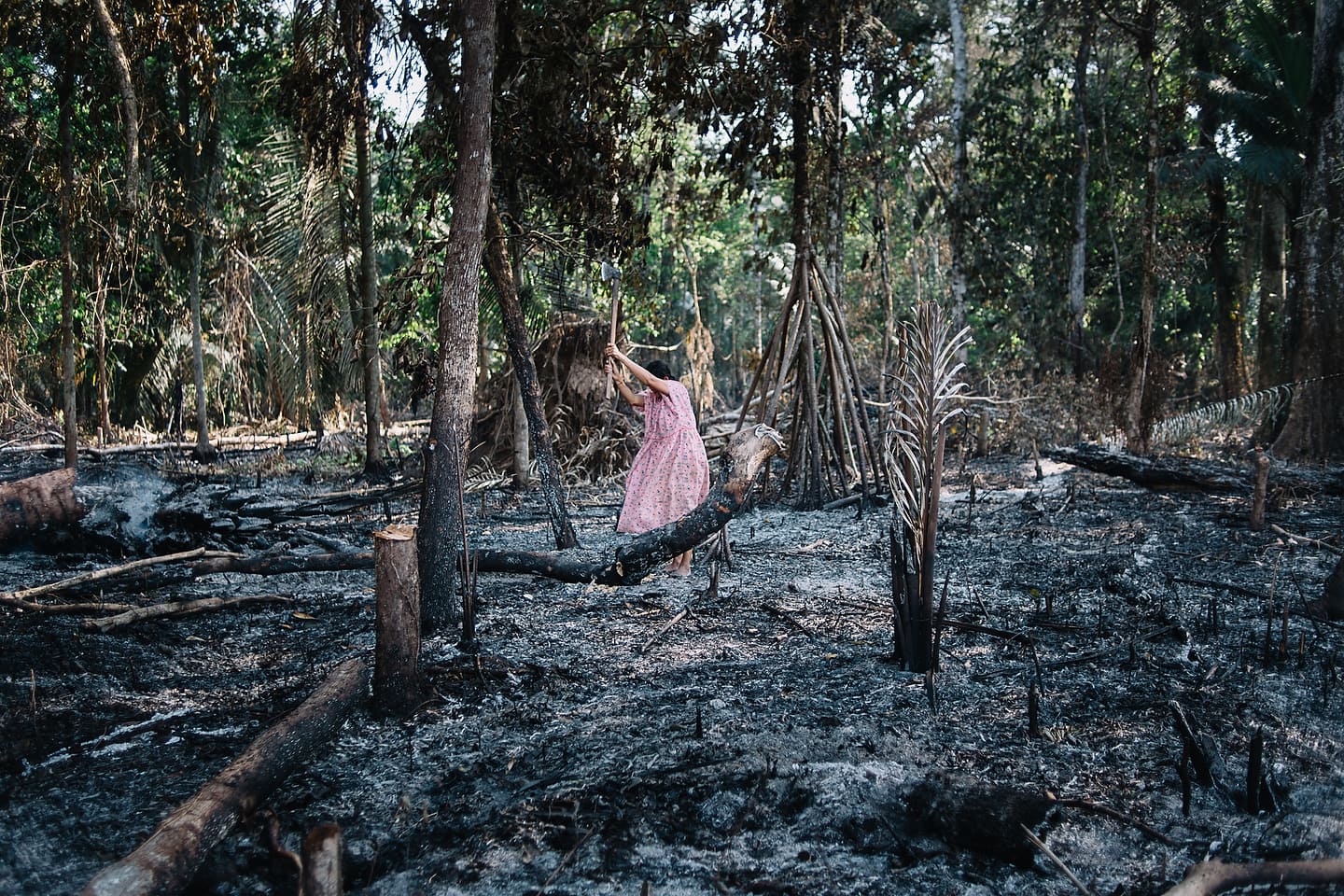
“From there, Santos said to me: ‘Hey, can’t you see what we have filmed? We tried it, and they were fascinated to see themselves on the big screen. I put together a first cut of the film and showed it to them, and they also liked it. It was interesting because there was a drunken scene. And I asked Santos if he didn’t think we should show that. And he said, ‘I don’t like it, but it’s true. It’s okay to show it. They understood that they could use the documentary to discuss those problems and reflect on their life.”
What inspired you to embark on this project?
I met the Chimán community of Maraca’tunsi in 2020. Thanks to the support of the Rainforest Journalism Fund and the Pulitzer Center, journalist Karen Gil and I reported on the deforestation in the area in the 1990s. That’s how we learned about the history of this community that inhabits the Chimanes Forest and is the only one in charge of protecting it. But the report was explicitly about the logging issue; once completed, I became good friends with them and thought it would be interesting to portray the life of these forest guardians, showing their essential role in the ecosystem’s sustainability. Then, I proposed to Santos Canchi, the corregidor of the community, to do a more extensive documentary work about them, and he accepted with pleasure.
But my initial idea was to make a photo book, which is the complete support that documentary photography can aim at because it remains in time and delves into a subject, not only from images but also from a written testimony. Santos didn’t like the concept very much, so I understood their reasons: first, they speak very little Spanish, so reading it would be impossible for them. And also, the book is something that, although we readers like it, is not necessarily very attractive to the general public. Then Santos said, “But your camera films, doesn’t it? Well, let’s make a film,” he suggested. I knew it wasn’t that simple, but I agreed.
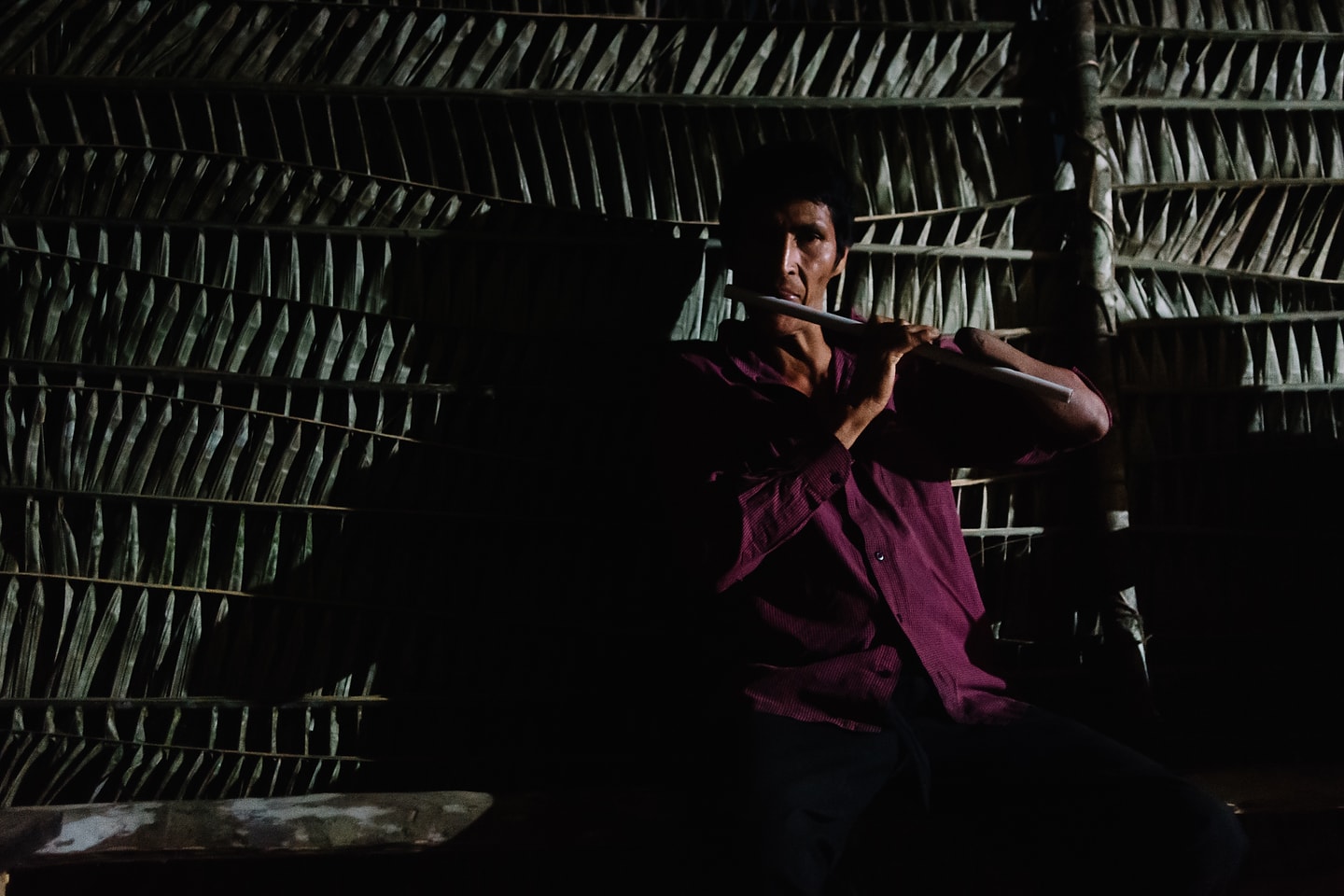
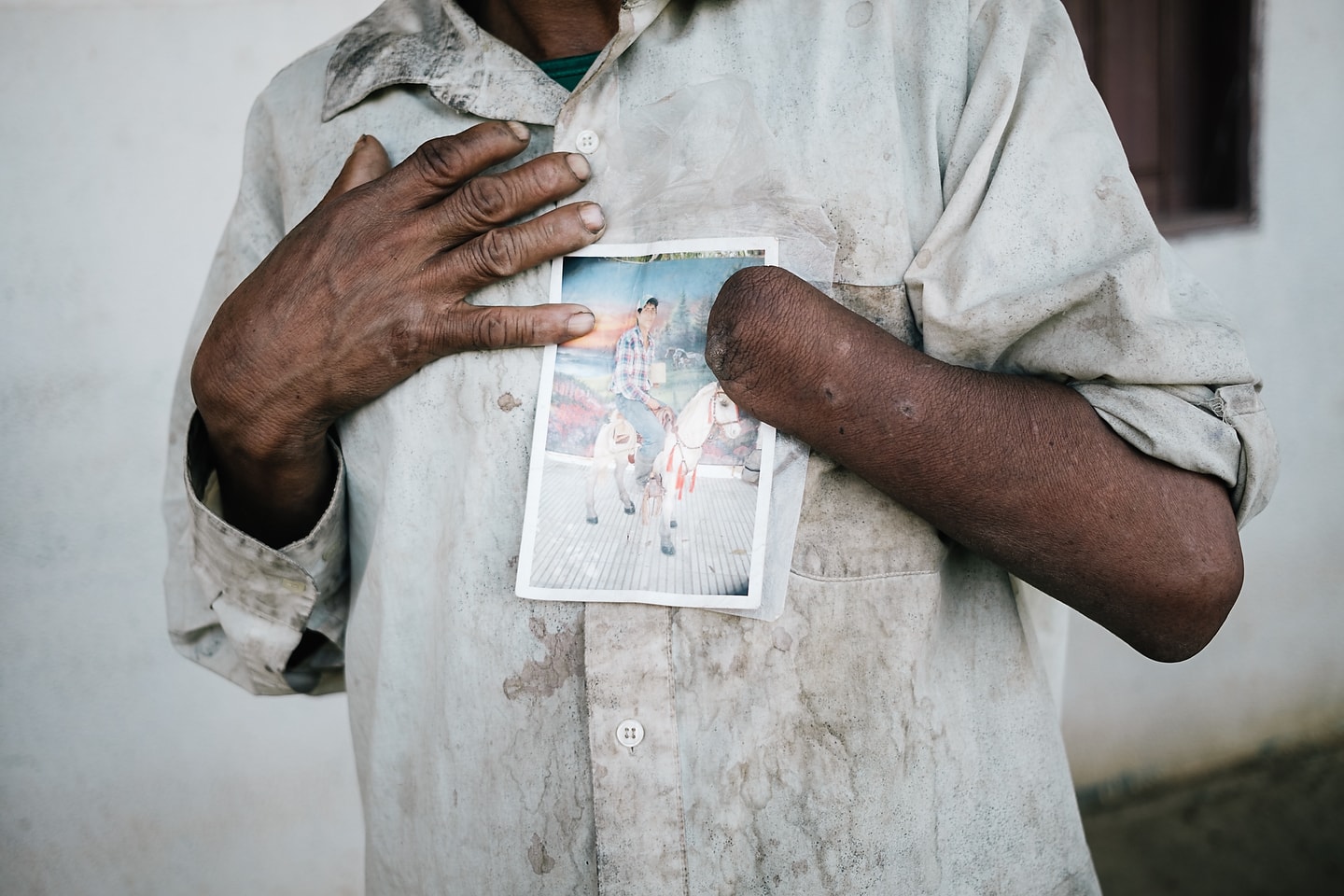
Have you made films before?
Years ago, I worked on a couple of audiovisual productions in which I did still photography and photo assistance. Before that, I had done some video exercises during my documentary photography training at a Denmark school. So I knew how to use the camera and had notions of how to edit but not make a film.
But I liked the idea because, unlike the book, a film – made, of course, in Chimán – could be understood by both a child and an elder in the community, and they don’t speak a word of Spanish. That is to say, and I understood everything had to be done in their language because the product was for them.
We wanted the film to reach other audiences with a message, but what attracted me most was that it was a project they wanted to do.
Tell me about the experience of working with them.
Since I am not a filmmaker, I told Santos: “This will be an experiment. So let’s do it together. Because if, in the end, it was their decision, why not involve them actively? I was lucky that a few years earlier, I had worked teaching photography classes for children in a school here in Bolivia, and I had six digital cameras available, so I took them to the community.
As a photographer, I know how to handle the camera and composition, but I had no idea how they would receive this material. They were not even interested. But it happened that, due to the pandemic, the community’s children did not have classes at that time and had a lot of free time. With Santos, we decided to take advantage of that, and those children were the first ones I taught how to use the cameras. At first, of course, I was very hesitant. I didn’t know if it was going to work.
And did it work, or was there resistance?
It worked very well. They latched on to the cameras very quickly. Kids have a lot of intuition. They live by learning things, and all their learning is from experience. It was the same with the cameras. I taught them how to turn on the device and told them which button to press to record. Then they would come, and they knew how to zoom, they knew how to take pictures, and they would surely rummage around until they found what it was for. It was wonderful.
Another perfect thing happened. I took a small projector to the community because I said: since we are going to make films and they have never had that experience or have seen very few films, why not bring the language of cinema to them so that they would have more tools to imagine what we could build together. And since most did not speak Spanish, I brought them silent films by Chaplin. They liked it very much.
Santos said, “Hey, can’t you see what we filmed? We tried it, which fascinated them, to see themselves on the big screen. That’s when they started to connect with the film. If, in the beginning, there were only a few children and a couple of adults handling the cameras, after that screening, the whole community began to ask me for the devices, including the women, who were the shyest ones.
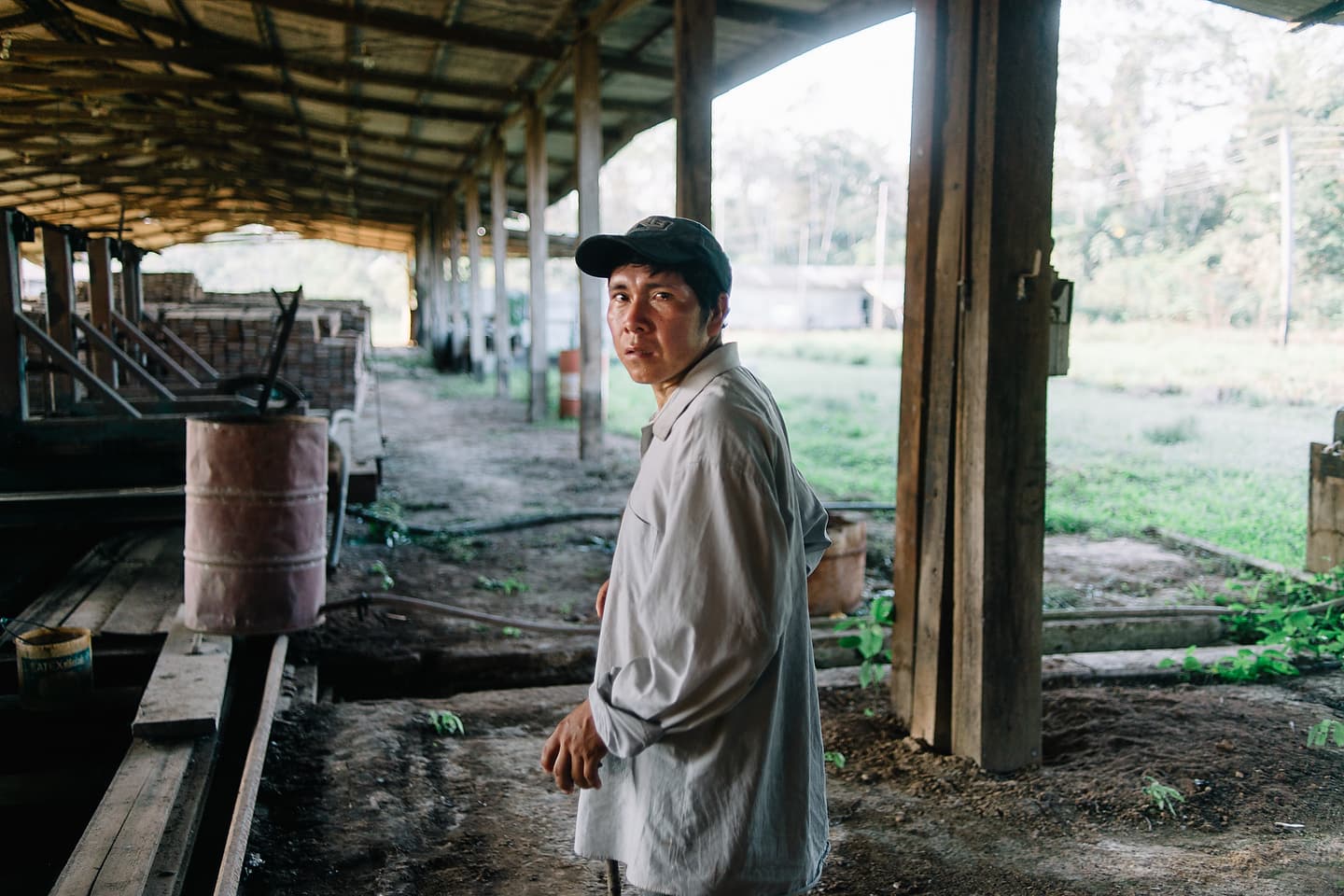
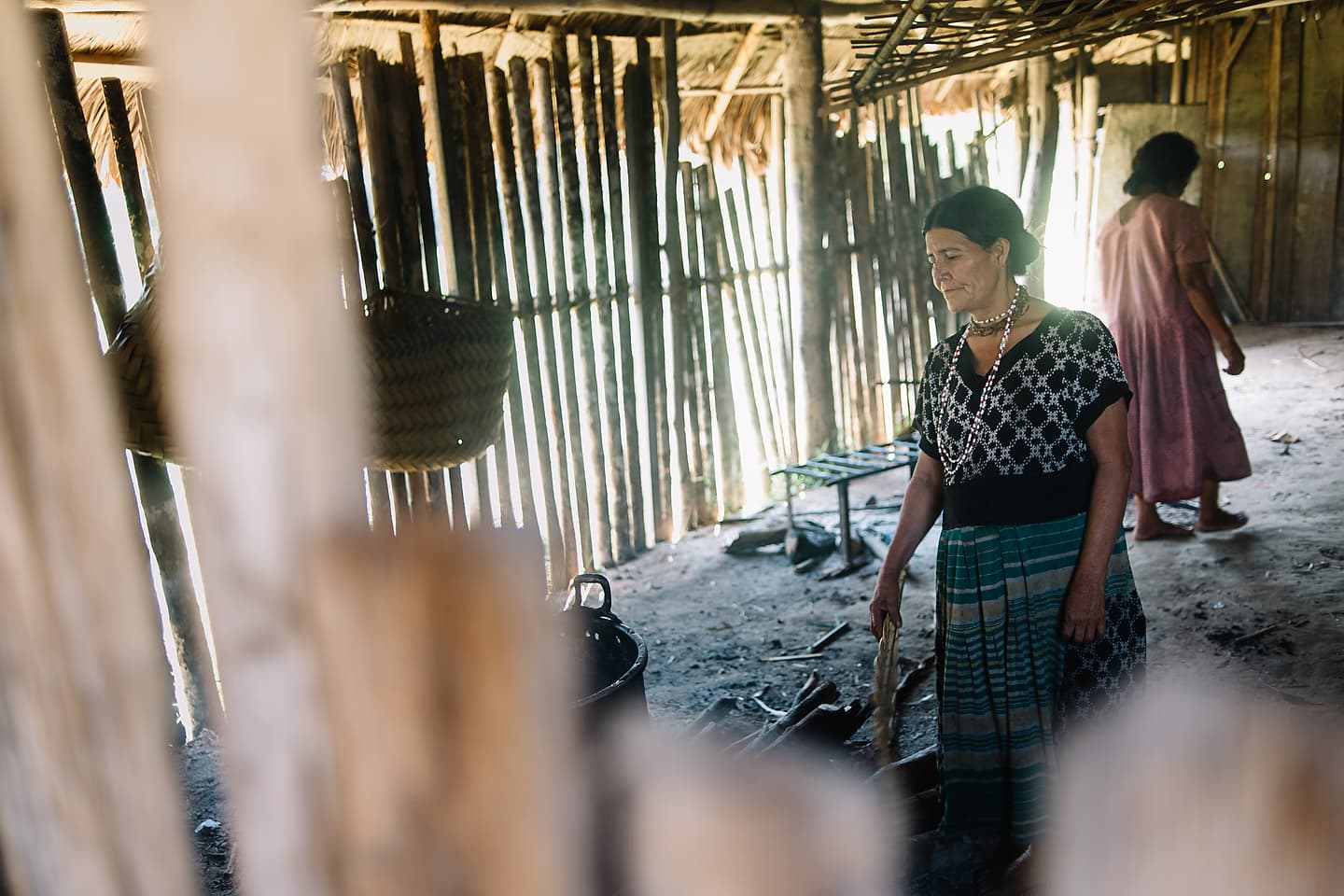
What were they interested in recording?
In the beginning, it was a game: they were discovering audiovisuals. But then I would tell them: “Chimán is not just making jokes, is he? For example, what did you do today?” “I went hunting,” they would answer me. “Well,” I tell them, “hunting is an elemental part of Chimán life; why don’t you film that?”. The next day they began to film planting, harvesting, and fishing; they began to understand that this job allowed them to show themselves as they are.
I wondered how we would splice all this material, but I was determined they would also participate in the editing. And the solution I found was to use the daily screenings to annotate the footage they liked the most. I then put all those files together, filtered out the redundant material, assembled it into a two-hour sequence, and made them watch it. At the end of the session, I asked them if there was anything in that footage they didn’t want to show if they found it demeaning or harmful, but they told me they liked it all.
From that material, I put together a first cut of the film, showed it to them, and they also liked it. It was interesting because there was, for example, a scene of drunkenness when they go out to the city, receive money, and suck it. It’s something that doesn’t look so good. And I asked Santos specifically if he didn’t think we should show that. And he said, “I don’t like it, but it’s true. It’s okay to show it.” They understood that they could use the documentary to discuss those problems and reflect on their lives. And it was very nice to see that process of reflection in them.
What were the reactions of the Chimán community when they saw the final result?
The premiere did not occur in the community because the conditions did not exist for a screening with these characteristics. It was in San Ignacio de Moxos, where they go when they go to the city. We screened in the Indigenous Council, an institution created to have a space for the representation of the communities, and it was beautiful. They were happy.
Somehow, the Chimán are usually seen negatively within the indigenous communities because they have less contact with the city than other communities. The indigenous Movimas or Mojeños, who already have a much more mercantile relationship with the land and the State, treat them condescendingly: they call them the ‘Parientitos’ to diminish them. In other words, they continue to see them through the prism of colonial heritage. But on the day of the premiere, people from those communities who had seen the film said, ‘ I didn’t know the Chimanes were like that’ because they always see them as quiet. Of course, they are silent because they don’t speak Spanish very well.
I have felt that they have seen this with a lot of pride, the fact of being represented on the big screen. It’s the idea that it’s not just Superman and the comic book characters; I can be there too. That has been the most beautiful thing.
E·CO/23]
This work is one of the inspirations for E-CO/23], the new edition of our meeting of photographic collectives, which this year will have as its thematic axes: Ecologies, Territories, and Communities.
Through this call, we are interested in gathering stories of sustainable development, community movements, and ways of inhabiting the land in the community to achieve new narratives built from the plurality of collective creation.
Each selected project will receive support of 5,000 euros for its production. The tasks can be presented by existing collectives or by groups of people working in collaboration for this project in an interdisciplinary way.
The selected groups will participate in a collective process of production and reflection that will be accompanied by pedagogical support with specialists in the themes.
Once the production stage is completed, the project results will be presented in one or more exhibitions that may rotate and on the digital platforms of Fundación VIST, the AECID, and the participating Spanish Cultural Centers or the institutions they designate. The aim is to consolidate networks for creating and circulating visual narratives in Ibero-America.


